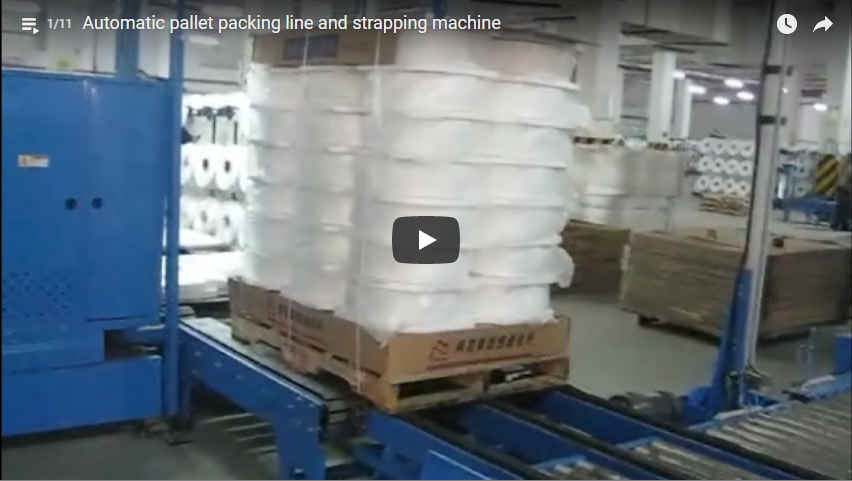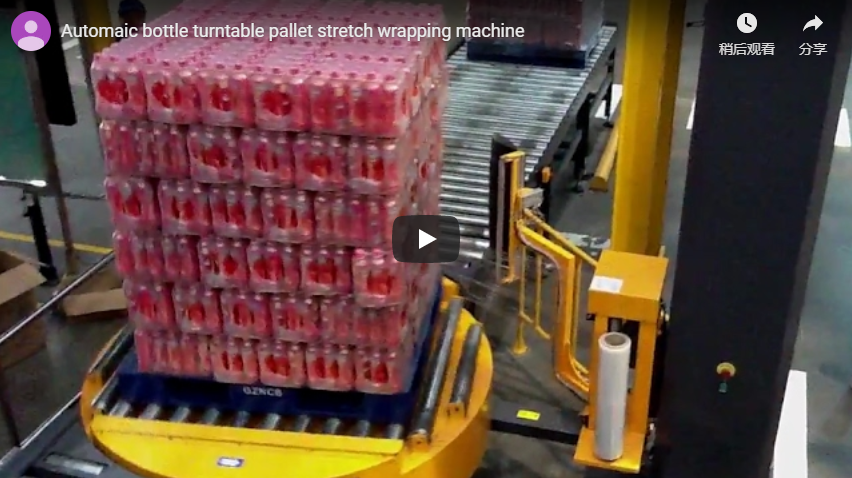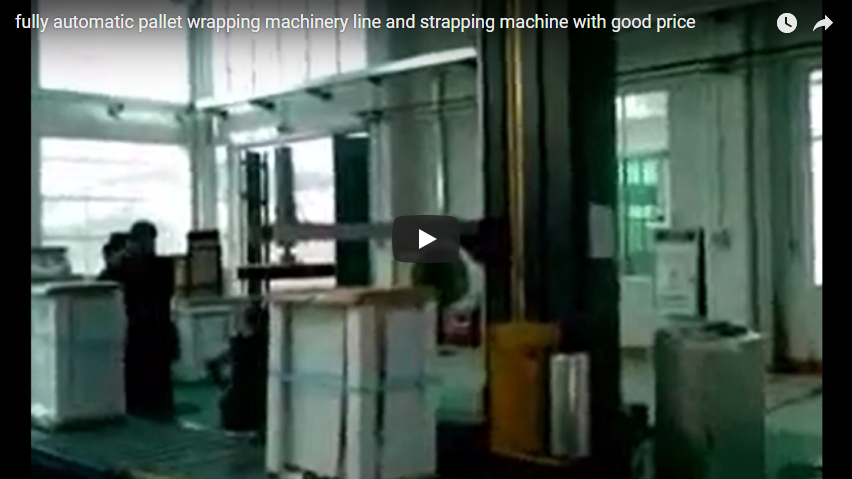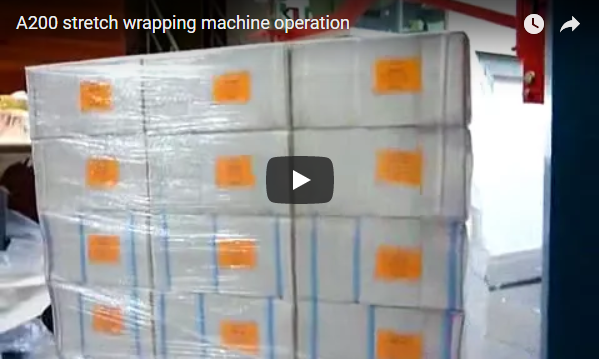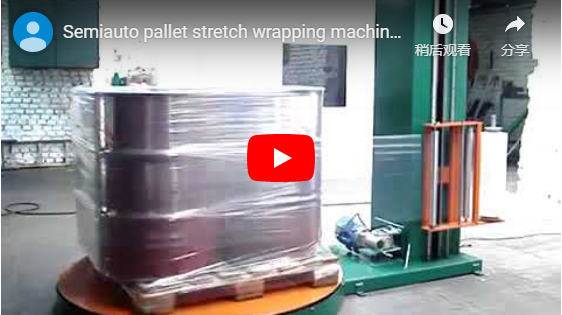A Fabricator's Guide to Semi-Automatic Pallet Wrapping: Turntable vs. Rotary Arm Technology
Ensuring load stability and security during transit and storage is paramount in manufacturing and fabrication environments. Pallet wrapping, or stretch wrapping, is a critical final step in the packaging process. Semi-automatic stretch wrapping machines offer a significant upgrade over manual wrapping, boosting efficiency, consistency, and operator ergonomics. This guide delves into the two primary designs of semi-automatic pallet wrappers: turntable and rotary arm systems, helping you understand their operation, applications, and key technical considerations.
Below is a video illustrating the operation of a typical semi-automatic turntable pallet wrapping machine, similar to models like the A200:
1. Understanding Semi-Automatic Operation
Semi-automatic wrappers bridge the gap between manual labor and fully automated lines. The operator typically places the pallet load onto the machine, attaches the stretch film tail to the load, and initiates the wrap cycle via a control panel. The machine then automatically applies the film according to pre-set parameters (e.g., number of top/bottom wraps, tension, travel speed). Once the cycle completes, the operator cuts the film and removes the wrapped pallet.
2. Turntable Pallet Wrappers: The Workhorse Standard
Turntable wrappers are the most common type of semi-automatic stretch wrapper.
2.1. Operating Principle
The pallet load is placed directly onto a rotating turntable. As the turntable spins, a film carriage assembly, mounted on a vertical mast, moves up and down, dispensing the stretch film and wrapping the load.
2.2. Ideal Applications
- Stable, relatively uniform loads: Boxes, cartons, or other items that can withstand rotational forces without shifting.
- Standard pallet weights: Loads that fall within the machine's specified weight capacity (often up to 2000 kg / 4400 lbs).
- Environments where load placement via forklift or pallet jack is straightforward.
2.3. Key Technical Specifications to Consider
- Turntable Diameter: Typically ranging from 1500mm (59") to 1800mm (71"), determining the maximum pallet dimensions.
- Turntable Speed: Adjustable, often up to 12-15 RPM.
- Maximum Load Weight: Crucial spec, usually from 1500 kg (3300 lbs) to 2500 kg (5500 lbs).
- Maximum Wrap Height: Dictated by the mast height, commonly 2000mm (78") to 2800mm (110").
- Film Pre-Stretch System: Percentage of film elongation before application (e.g., 250%-300%). Higher pre-stretch significantly reduces film consumption. Look for powered pre-stretch carriages.
- Control System: PLC (Programmable Logic Controller) offering customization of wrap patterns (top/bottom wraps, carriage speed, turntable speed).
- Construction: Heavy-duty steel frame for durability in industrial settings.
2.4. Advantages
- Generally lower initial investment cost compared to rotary arm models.
- Simpler mechanics can lead to easier maintenance.
- Wide availability and established technology.
2.5. Limitations
- Not suitable for very heavy loads that exceed the turntable capacity.
- Unstable, lightweight, or irregularly shaped loads may shift or topple during rotation.
- Requires the load to be physically placed onto the machine.
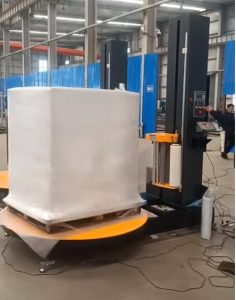
pallet stretch wrapping machine with weighing scale 3. Rotary Arm Pallet Wrappers: Handling the Challenges
Rotary arm wrappers (sometimes called straddle wrappers) operate on a different principle, designed specifically for loads that cannot be easily rotated.
3.1. Operating Principle
The pallet load remains stationary on the floor. A rotating overhead arm travels around the load, dispensing the stretch film from the film carriage mounted on the arm.
3.2. Ideal Applications
- Unstable or very tall loads: Loads prone to shifting or falling if rotated.
- Extremely heavy loads: Since the load sits on the floor, the machine's weight capacity is limited only by the floor itself.
- Very light loads: These might slide on a turntable but are held securely stationary.
- Washdown environments: Some models are designed with stainless steel components suitable for food/beverage or pharmaceutical applications.
- Irregularly shaped loads.
3.3. Key Technical Specifications to Consider
- Maximum Load Dimensions (Wrap Zone): Defined by the arm's rotation radius and the mast height.
- Rotary Arm Speed: Adjustable, often comparable to or slightly faster than turntable RPMs in terms of wrap Efficieny.
- Maximum Wrap Height: Similar range to turntable models, determined by mast/carriage travel.
- Film Pre-Stretch System: Essential for film efficiency; powered pre-stretch is standard.
- Control System: PLC controls for complex wrap patterns.
- Footprint: Generally requires a larger operational footprint than turntable models.
- Safety Features: Requires robust area guarding (light curtains, safety fencing) due to the moving arm.
3.4. Advantages
- Ability to wrap difficult, heavy, light, or unstable loads securely.
- Load remains stationary, eliminating shifting issues caused by rotation.
- Potentially higher throughput for certain applications.
3.5. Limitations
- Typically a higher initial investment cost.
- Larger machine footprint and requires more floor space.
- Mechanically more complex than turntable designs.
4. Operational Best Practices & Experience Insights
Regardless of the machine type, optimizing the wrapping process involves several factors:
- Film Selection: Use high-quality stretch film appropriate for the load type and pre-stretch system. Thinner gauge films with high pre-stretch capability can yield significant savings.
- Pre-Stretch Maximization: Always utilize the highest pre-stretch level possible that maintains load integrity without crushing the product. This maximizes film yield and improves load containment force.
- Containment Force: Ensure proper film tension and overlap (typically 50%) to achieve adequate containment force, preventing load shifting during transit. Test wraps periodically.
- Wrap Pattern Optimization: Program the machine for the minimum number of top and bottom wraps required for stability. Avoid excessive film usage.
- Regular Maintenance: Keep photo-eyes clean, check roller condition, lubricate moving parts as per manufacturer recommendations, and inspect safety features regularly.
- Operator Training: Ensure operators understand proper film loading, setting adjustments, safety procedures, and basic troubleshooting.
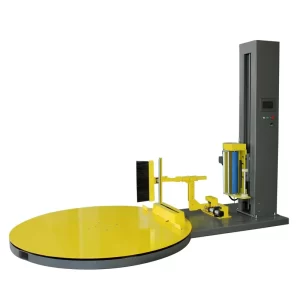
pallet stretch wrap 1 jpg 5. Choosing the Right Semi-Automatic Wrapper
Selecting the appropriate machine hinges on analyzing your specific needs:
- Load Characteristics: What are the typical weight, dimensions, stability, and shape of your pallet loads? This is the primary deciding factor between turntable and rotary arm.
- Throughput Requirements: How many pallets per hour or shift do you need to wrap?
- Budget: Consider the initial investment cost versus the long-term savings from film efficiency and labor reduction.
- Available Space: Evaluate the machine footprint and required operating clearance.
- Operating Environment: Are there special considerations like washdown requirements?
Conclusion
Semi-automatic pallet wrapping machines, whether turntable or rotary arm designs, offer substantial improvements in packaging consistency, speed, and material usage compared to manual wrapping. Turntable models provide a cost-effective solution for standard, stable loads, while rotary arm machines excel at handling unstable, heavy, or light pallets. By understanding the core differences in technology, key specifications, and operational best practices, fabricators and manufacturers can select and utilize the stretch wrapping equipment that best optimizes their end-of-line packaging process for enhanced load security and efficiency.
For more information on specific models or configurations:
https://www.fhopepack.com/Semi-auto-pallet-wrapping-machine/
info@fhopepack.com

